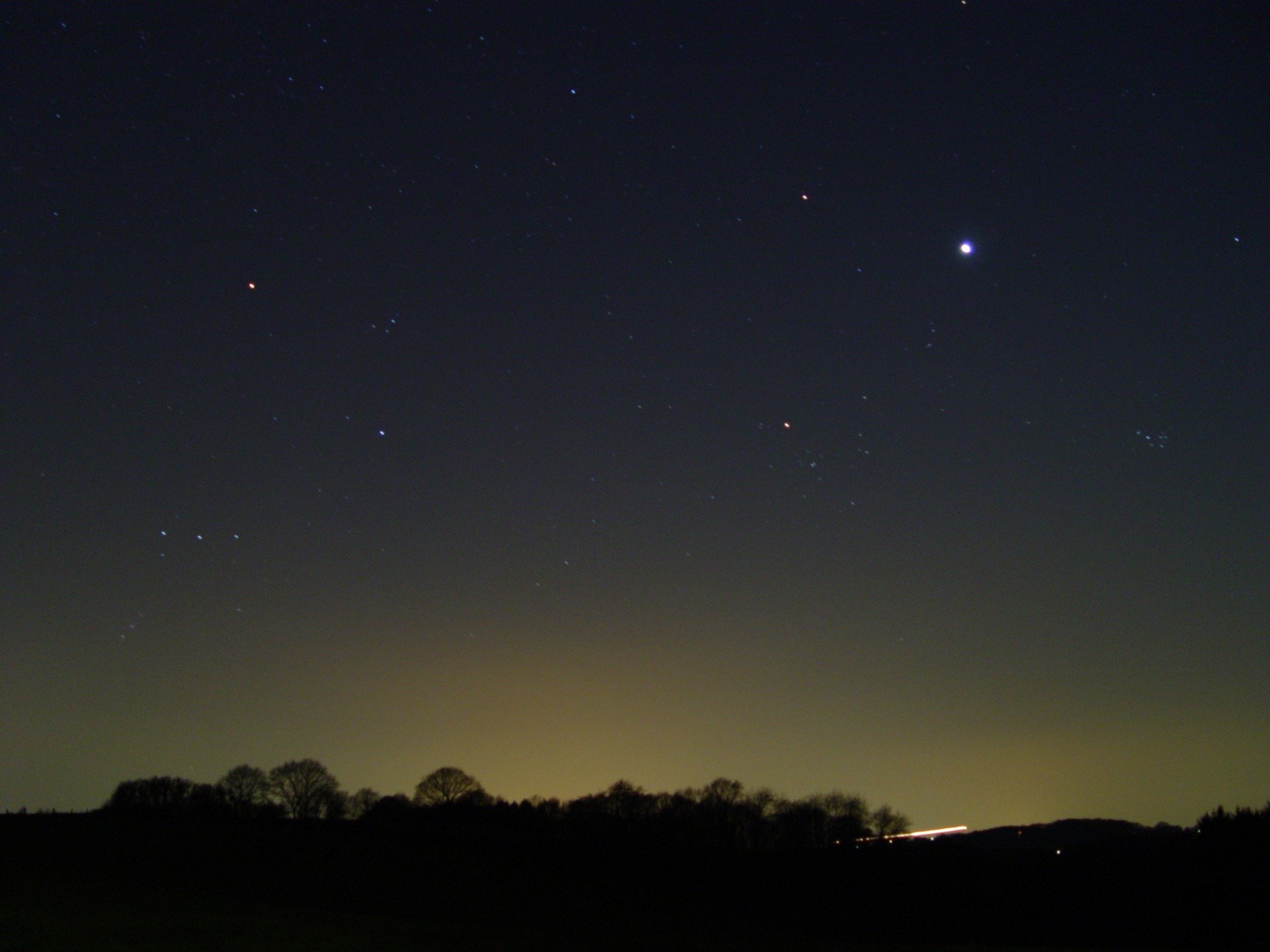Happy New Year, everyone! And what’s a better way to begin 2021 then to go stargazing, Moongazing, planetgazing or even meteorgazing! Not sure what’s there to see?
Here are celestial wonders to look out for in January 2021 .
Meteor shower
The first meteor shower of 2021, the Quadrantids, will peak on the night of January 3-4. The Moon will be quite bright that night, but, provided the sky is clear, you might still be able to spot 50 or so meteors every hour, just make sure to keep your back to the Moon!
Unlike with most other showers, the maximum of the Quadrantids is quite sharp, meaning there is not much meteor activity outside the peak.
The Quadrantid meteor shower stands out because of its peculiar name. Meteor showers are named after their radiants, i.e. the constellations they seem to originate from. The Perseids come from the constellation Perseus, Leonids – from Leo the Lion and so on. But what about the Quadrantids? The constellation of Quadrans Muralis (that’s Latin for ‘mural quadrant’) that gave name to the shower no longer exists! It was wiped out of existence in 1922 when the International Astronomical Union formally recognized the names and boundaries of the 88 ‘modern’ constellations. The radiant of the Quadrantid meteor shower lies in what is now the constellation Boötes the Herdsman.
Constellations
✨ Orion the Hunter is the king of the winter sky in the Northern Hemisphere. Look out for 3 stars in a row – that’s Orion’s Belt, then find 2 stars above the belt and two below – together these stars form Orion’s famous hourglass pattern. Note the colours of the stars in Orion. Can you spot the red star (Betelgeuse) and the icy blue one (Rigel)?
✨ Another well known January constellation is Taurus, the bull that is charging at Orion. To find Taurus, follow the line of Orion’s Belt ‘up’ till you spot a very bright star. That’s Aldebaran, the eye of the bull and the constellation’s brightest star. Taurus is home to two famous open star clusters visible to the naked eye, Pleiades (aka the Seven Sisters) and Hyades. To find Pleiades, follow the same line through Orion’s Belt past Aldebaran. See that fuzzy ball of stars? That’s the Seven Sisters. Depending on the sky conditions and your eyesight, you might be able to see fewer than 7 stars, or more. Most people can count six.
To spot Hyades, start with Aldebaran and find five nearby stars (or about a dozen if you look carefully) that, together with Aldebaran, make the shape of the letter V. These are the bright members of the star cluster. Interestingly, to the observer on Earth Aldebaran appears to be part of the cluster too. But that’s an illusion caused by Aldebaran and Hyades being on the same line of sight as seen from Earth. In reality, the cluster is about two times further away from us than Aldebaran is.
❓Can you spot any of these objects on the feature image above?
Moon
Whether you plan to observe the Moon or hope to avoid it, the Moon phases for January 2021 are as follows:
6 January – Last Quarter Moon
13 January – New Moon
20 January – First Quarter Moon
28 January – Full “Wolf Moon”
Planets
There are five naked eye planets, but this time of year you will most likely only see two: Mars in the evening and Venus at dawn. We’ve been spoiled with spectacular views of Mars these past months, but do not miss your chance to have the last glimpse of the Red Planet this January. The planet will be gone soon!
Jupiter and even more so Saturn and Mercury might be tricky to see in this month as they appear low in the evening sky. For the best chance to spot the gas giants try soon after the sunset and make sure you get an unobstructed view of the horizon. You might be able to see Mercury in the second half of January 2021.
How do I learn to read the night sky?
A Planetarium Show is a great way to learn about the night sky. Star Domes are especially popular with families as the activity takes place indoors and in the daytime – no staying up late or being outside in the cold weather required!
If you are ready for the field experience, these Open source planetarium software and free night sky apps for stargazers will help you prepare for the stargazing session and help you navigate the skies during the observing run.
Clear skies and happy stargazing!

